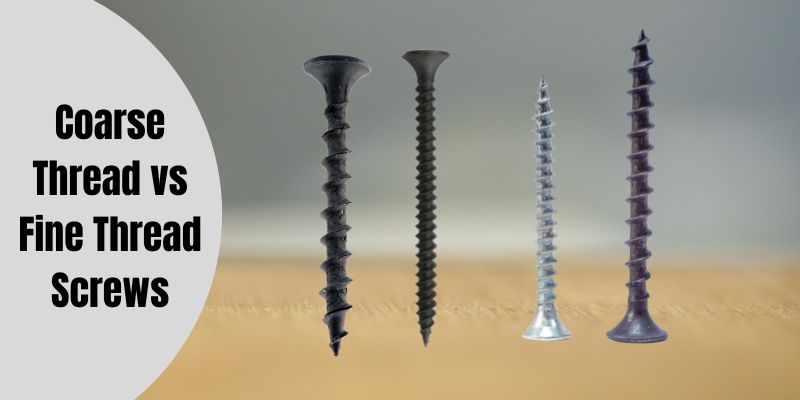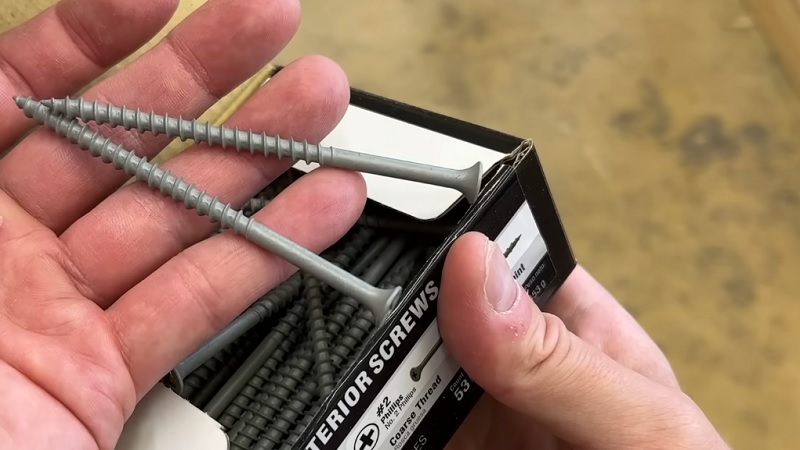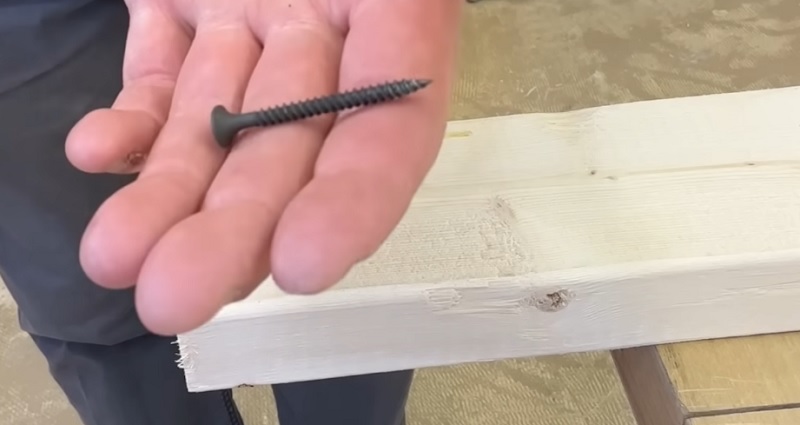Screws are essential fasteners used in many industries and everyday applications. They come in various types, with thread design being a key feature that affects their performance. Two main thread types are coarse and fine threads. Choosing the right thread type is important for ensuring proper fit, strength, and function in different projects. This article will explore the differences between coarse and fine thread screws, their uses, and how to pick the best option for your needs.

Understanding Thread Basics
Before we dive into the differences between coarse and fine thread screws, let’s cover some basic terms:
Thread pitch: This is the distance between two adjacent threads on a screw. Coarse threads have a larger pitch, while fine threads have a smaller pitch.
Threads per inch (TPI): This measures how many threads are in one inch of the screw. Coarse threads have fewer TPI, while fine threads have more.
Major diameter: The widest part of the screw’s threaded portion.
Minor diameter: The narrowest part of the screw’s threaded portion.
Now, First get a short answer, Coarse vs. fine thread screws: The main difference lies in thread pitch and distance between peaks. Coarse threads have wider spacing and broader angles, ideal for softer materials and preventing stripping. Fine threads feature closer spacing and narrower angles, providing more surface contact for stronger hold in harder materials. These differences determine their optimal applications.
Now, let’s examine each type of screw thread based on its individual characteristics.
What Are Coarse Thread Screws?

Coarse thread screws have wider spaces between their threads. This design gives them some helpful features. The wider thread spacing allows these screws to be driven in faster, making for quick installation. They also have a good grip in soft materials, working well in wood, plastic, and other soft substances. The wider spacing makes it harder to start the screw at the wrong angle, making them less likely to cross-thread. Additionally, the deeper threads are less likely to wear down or break, helping them resist stripping.
Coarse thread screws are often used in woodworking projects, general construction, plastic assemblies, and situations where quick assembly is needed. These screws are usually made from steel for strength and affordability, stainless steel for rust resistance, or brass for decorative purposes or in certain electrical applications.
What Are Fine Thread Screws?

Fine thread screws have smaller spaces between their threads. This design offers several benefits. The more threads engaged with the material provide a stronger hold, giving these screws higher tensile strength. They also offer better vibration resistance, as the tighter fit helps prevent loosening in high-vibration environments. The smaller thread pitch allows for more precise adjustments and accurate tightening. Fine thread screws can also be used in materials that are too thin for coarse threads due to their thinner wall thickness.
Fine thread screws are commonly used in metal working, automotive applications, aerospace industry, and precision instruments. Materials often used for fine thread screws include hardened steel for high-strength applications, stainless steel for corrosion resistance, and titanium for aerospace and high-performance uses.
Key Differences Between Coarse and Fine Thread Screws
Before going into a deep comparison, first look at the simple comparison and key differences between coarse and fine thread screws.
| Coarse Thread Screws | Fine Thread Screws |
| Wider spaces between threads | Smaller spaces between threads |
| Quick installation | Slower installation |
| Good grip in soft materials | Better for hard materials |
| Less likely to cross-thread | More precise adjustments |
| Resist stripping in soft materials | Higher tensile strength |
| Used in woodworking, construction | Used in metalworking, automotive |
| Good for thicker materials | Suitable for thinner materials |
| Faster to install and remove | Better vibration resistance |
| Often made of steel, stainless steel | Often made of hardened steel, titanium |
| Best for wood, plastic, general use | Best for precision work, high-stress areas |
How Do Coarse and Fine Thread Screws Differ?
Thread Pitch and Angle
The main difference between coarse and fine thread screws is their thread pitch – the distance between thread peaks. Coarse threads have a larger pitch, while fine threads have a smaller pitch. This affects how quickly the screw advances as it’s turned.
The thread angle also differs slightly. Coarse threads often have a wider angle, which helps prevent stripping in softer materials. Fine threads have a narrower angle, providing more surface contact for a stronger hold in harder materials.
Strength and Load-Bearing Capacity
Fine thread screws generally have higher tensile strength due to their larger surface area in contact with the material. This makes them better for high-stress applications. However, coarse thread screws can sometimes have better shear strength, making them more resistant to sideways forces. For pull-out resistance, coarse threads perform better in softer materials like wood, gripping the wood fibers more securely.
Installation and Removal
Coarse thread screws are usually easier and faster to install and remove. They require fewer turns to reach full depth. Fine thread screws take more turns but offer more precise adjustment.
Stripping and Cross-Threading Resistance
Coarse thread screws are less likely to cross-thread during installation due to their wider spacing. They’re also more resistant to stripping in softer materials. Fine thread screws can be more prone to cross-threading if not started carefully, but they’re less likely to strip in harder materials.
Factors Affecting Screw Selection
Several factors should guide your choice:
Material thickness: Thicker materials often work better with coarse thread screws, while thinner materials may need fine thread screws.
Clamping needs: If you need to hold two pieces tightly together, fine thread screws often provide better clamping force.
Corrosion resistance: Some screw coatings can affect thread choice. Make sure to choose a screw that resists corrosion for your specific use.
Best Practices for Screw Selection and Installation
Matching Screw Type to Material
For wood: Use coarse thread screws for softwoods and sheet goods like plywood. Use fine thread screws for hardwoods.
For metal: Use fine thread screws for most metal applications, especially with thinner gauge metals.
For plastic: Coarse thread screws usually work best, but be careful not to overtighten.
For drywall: Use coarse thread screws for attaching to wood studs, and fine thread for metal studs.
Proper Installation Techniques
Pre-drilling: For hardwoods or when working near the edge of a board, pre-drill to prevent splitting.
Countersinking: When the screw head needs to be flush or below the surface, use a countersink bit.
Driving speed: Start slowly to help the screw bite into the material, then increase speed. Slow down again when the screw is almost fully driven.
Avoid stripping: Don’t overtighten screws. Stop when the screw head is flush with the surface or slightly countersunk. If striped read this guide how to remove stripped screw.
Common Mistakes to Avoid
Using the wrong screw for the material: This can lead to poor hold or damage to the material.
Skipping the pilot hole: This can cause splitting in wood or chipping in brittle materials.
Overtightening: This can strip the screw or damage the material.
Using screws that are too short: This results in a weak connection. The screw should penetrate the base material by at least the same length as the thickness of the top material.
Ignoring corrosion potential: In outdoor or humid environments, use corrosion-resistant screws to prevent rusting.
Choosing the Right Screw for Best Results
Picking the right screw is key for any project. Think about the material you’re working with, how strong the connection needs to be, and what conditions the screw will face. With the right choice, your project will be more secure and long-lasting.
FAQs
Can I use coarse thread screws in metal?
While it’s possible, it’s not ideal. Coarse threads may not grip thin metal well and could strip the hole. Fine thread screws are usually better for metal, especially thin gauge. They provide a stronger hold and are less likely to work loose over time.
Are fine thread screws stronger than coarse thread screws?
It depends on the application. In metal, fine thread screws often have higher tensile strength. In wood, coarse thread screws typically have better pull-out strength. The material and specific use determine which is stronger.
Why do some screws have different thread patterns along their length?
Some screws have dual threads to serve multiple purposes. For example, a screw might have coarse threads near the tip for easy starting in wood, and fine threads near the head for better clamping force.
Can I mix coarse and fine thread screws in the same project?
It’s generally best to use the same type of screw throughout a project for consistency. However, in some cases, you might use different screws for different parts of the project, depending on the materials and needs of each part.
How do I know if I need coarse or fine thread screws for my project?
Consider the material you’re working with and the screw’s purpose. For wood and drywall, coarse threads are often best. For metal or when you need precise adjustments, choose fine threads. When in doubt, ask at your local hardware store.


